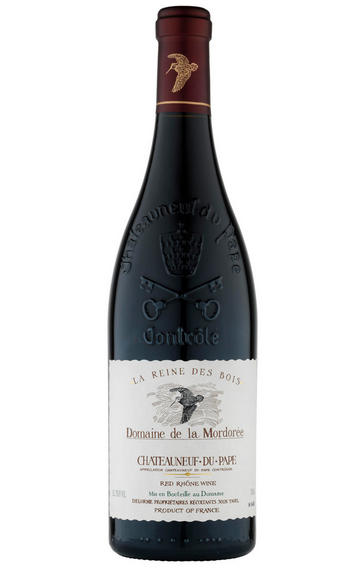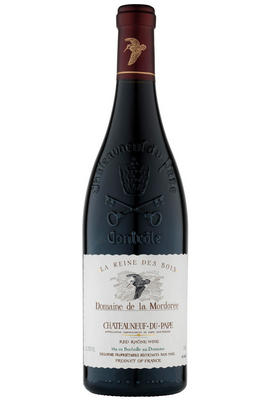
2009 Châteauneuf-du-Pape, La Reine des Bois, Domaine de la Mordorée, Rhône

Critics reviews
Jeb Dunnuck - 28/08/2014
About this WINE

Domaine de la Mordoree
Christophe and Fabrice Delorme at Domaine de la Mordorée did not take long to project this fine estate (which is named, somewhat poetically, after a woodcock) into the Premier League.
Based in the Southern Rhone appellation of Tavel, the brothers make, as one would expect, delicious rosé wine in addition to a very fine Lirac and an excellent Châteauneuf-du-Pape.
Christophe produced his first wines there in 1987. Up until that time the estate had been little more than a hobby for his father, an industrialist with two great passions; shooting and wine.
Christophe totally refurbished and modernised the winery as well as replanting much of the vineyards. Today the domaine has 40 hectares of vineyards - 7 hectares in Tavel, 15 hectares in Lirac (top-notch examples), 16 hectares for generic Côtes-du-Rhône and 3 hectares in Châteauneuf-du-Pape.
The vineyards are organically cultivated as much as possible, only using chemical weedkillers and pesticides as a very last resort. As for the winemaking, the grapes are all systematically destemmed upon arrival at the winery and vinification takes place in temperature controlled stainless steel fermenters. The wines are then matured in a mixture of stainless steel vats and new oak barrels. The Châteauneuf-du-Pape Cuvée de la Reine des Bois is a limited bottling only produced in the very finest years.

Châteauneuf-du-Pape
The most celebrated village of the Southern Rhône, Châteauneuf-du-Pape is the birthplace of the now indispensable French Appellation d’Origine Contrôlée system – imperfect though it may be. Compared to the Northern Rhône, the vineyards here are relatively flat and often feature the iconic galet pebbles – the precise benefits of which are a source of much debate. Minimum alcohol levels required by the AOC are the highest in France, but at 12.5% it is well below the natural generosity of Grenache, which only achieves its full aromatic potential when it is fully ripe and laden with the resultant high sugars. Syrah and Mourvèdre contribute the other defining elements in the blend, adding pepper, savoury spice and structure to the decadent Grenache. There are a further 10 permitted red grape varieties which can be used to adjust the “seasoning”. Of the five white varieties permitted, it is Grenache Noir’s sibling – predictably perhaps – Grenache Blanc, which dominates, though Roussanne shows a great deal of promise when handled well, notably at Château de Beaucastel.

Southern Rhône Blend
The vast majority of wines from the Southern Rhône are blends. There are 5 main black varieties, although others are used and the most famous wine of the region, Châteauneuf du Pape, can be made from as many as 13 different varieties. Grenache is the most important grape in the southern Rhône - it contributes alcohol, warmth and gentle juicy fruit and is an ideal base wine in the blend. Plantings of Syrah in the southern Rhône have risen dramatically in the last decade and it is an increasingly important component in blends. It rarely attains the heights that it does in the North but adds colour, backbone, tannins and soft ripe fruit to the blend.
The much-maligned Carignan has been on the retreat recently but is still included in many blends - the best old vines can add colour, body and spicy fruits. Cinsault is also backtracking but, if yields are restricted, can produce moderately well-coloured wines adding pleasant-light fruit to red and rosé blends. Finally, Mourvèdre, a grape from Bandol on the Mediterranean coast, has recently become an increasingly significant component of Southern Rhône blends - it often struggles to ripen fully but can add acidity, ripe spicy berry fruits and hints of tobacco to blends.


Buying options
Add to wishlist
Description
From the more robust end of an already powerful spectrum, the 2009 Chateauneuf-du-Pape Reine des Bois is a definite keeper. Dark of hue and with intense aromas of graphite, blueberry liqueur and crushed rock, the wine is dense and pure, its sweet fruit beautifully integrated with wood and its finish fine and persuasive.
(Simon Field MW, BBR Wine Buyer)
wine at a glance
Delivery and quality guarantee